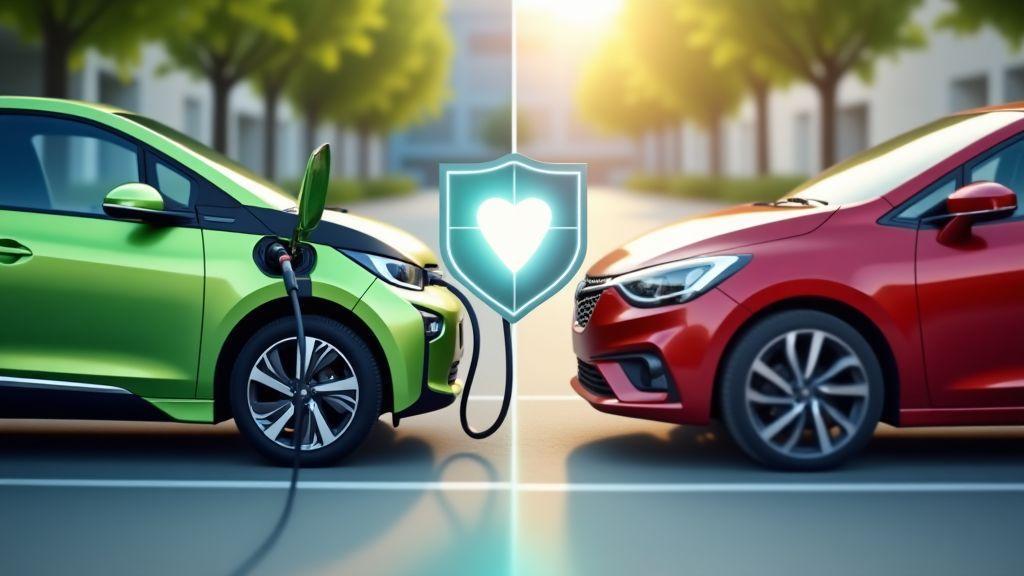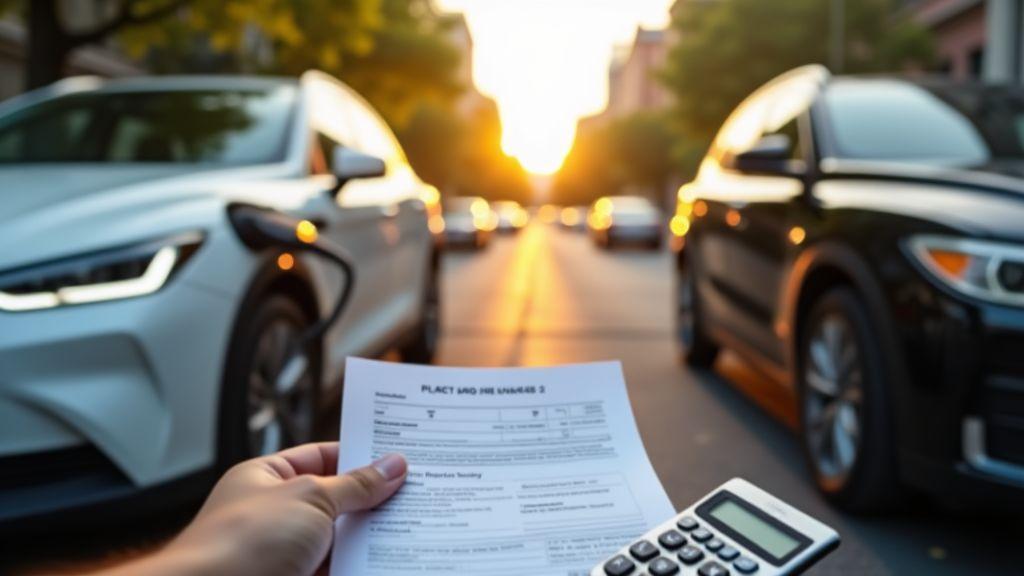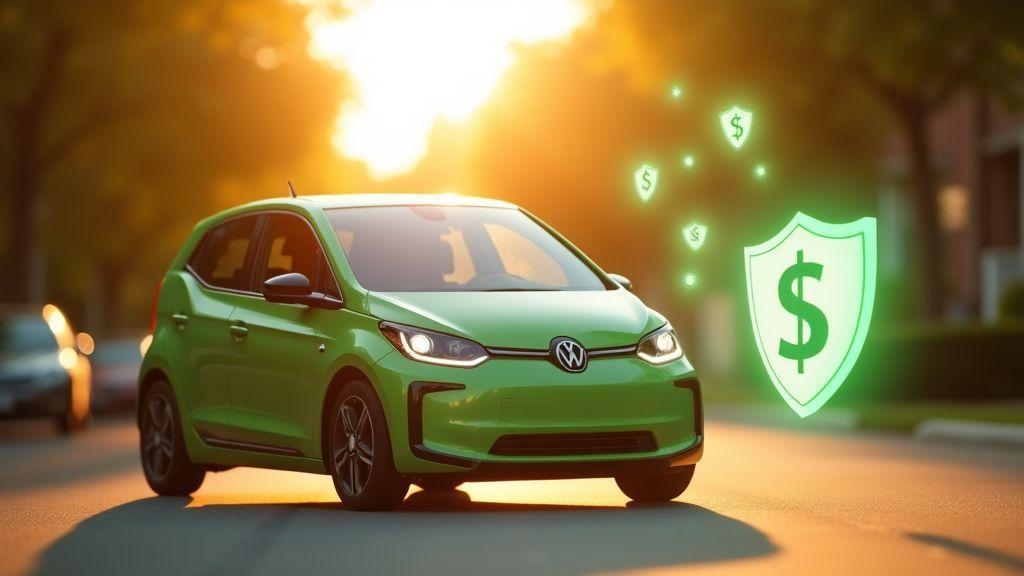Are Hybrid Cars Cheaper to Insure? (Full Breakdown)
You will get a clear, practical guide on how hybrid and gasoline car insurance premiums compare. Typical cost patterns and how model, location, and insurer change rates are explained. Learn how your driving record, mileage, vehicle age, and safety features affect your price. See what hybrid battery repair and replacement can mean for your out‑of‑pocket cost. Find simple tips to lower your premiums and protect resale value. Ask insurers for safety credits and compare quotes to save.
Key Takeaway
- You might pay more due to higher repair and battery costs.
- You can save if your hybrid has strong safety features.
- Your premium depends on the model, age, and where you live.
- You may get discounts for low mileage and eco‑friendly status.
- Shop and compare quotes to lower your cost.

How hybrid vs gasoline car insurance premiums compare
Hybrid cars can cost you more or less to insure than gasoline cars. The price depends on several clear factors: the car’s purchase price, the cost to repair or replace batteries, and the safety gear the car has. Insurers look at repairs and theft risk first. If a hybrid has expensive parts or needs specialist repair shops, your premium will climb. See more on How insurers set auto insurance prices to understand the core factors insurers use to set premiums.
You also bring factors to the table. Where you park, how much you drive, and your driving habits change quotes fast. Low annual mileage can shave premiums for hybrids because they spend more hours off the road. If you live in a dense city with higher theft or accident rates, that can wipe out any hybrid discount.
Main drivers insurers look at:
- Vehicle value and repair costs, including battery replacements and labor.
- Safety features and crash test ratings.
- Your mileage and usage pattern—lower miles often help.
- Location and local theft/accident rates.
Typical hybrid car insurance cost patterns
Hybrids often show one of two patterns. For compact, mass‑market hybrids you’ll usually see premiums similar to or slightly above comparable gasoline models because repairs for common models are inexpensive and safety features are strong (Toyota Prius, Civic Hybrid, etc.).
Luxury or niche hybrids tend to cost more. High‑end hybrids use costly parts and specialist shops. If your hybrid has a rare battery pack, expect higher claims costs and higher premiums. Some insurers, however, offer eco‑friendly discounts or hybrid programs that can soften that increase.
Are Hybrid Cars Cheaper to Insure? (Full Breakdown)
Are Hybrid Cars Cheaper to Insure? (Full Breakdown) — short answer: sometimes yes, sometimes no. You save when your model is common, repairs are cheap, and your driving profile is low‑mileage. You pay more when the car is expensive, parts are rare, or the battery is costly to replace.
Here are typical annual premiums (averages to show direction, not exact quotes):
| Model | Hybrid avg annual premium | Gasoline avg annual premium | Why it differs |
|---|---|---|---|
| Toyota Prius (compact) | $1,150 | $1,100 | Common parts, low repair cost |
| Honda Accord Hybrid | $1,300 | $1,250 | Mid‑range repairs, good safety tech |
| Lexus RX Hybrid (luxury) | $1,900 | $1,700 | Higher parts and labor costs |
National averages vary by model, location, and insurer
Urban areas with higher theft or accident rates push premiums up. Some states have caps or programs that lower costs. Insurer pricing rules also differ—one company may reward hybrid drivers, another may not. Get local quotes and check how each insurer treats hybrid parts and battery coverage.
Factors affecting hybrid car insurance
If you search “Are Hybrid Cars Cheaper to Insure? (Full Breakdown)”, the practical answer is: it depends. Your premium is a mix of factors — your driving record, miles driven, the model and age of the hybrid, and whether the car has pricey parts that cost a lot to fix. Change one ingredient and the rate shifts.
Insurers treat battery work and electric motors differently than regular car repairs. Battery work can be costly, and some shops charge a premium for hybrid repairs. At the same time, hybrids often include strong safety gear and attract drivers who drive conservatively. That combination pushes some policies down and others up.
Key levers insurers use when setting rates:
- Your driving record and recent claims.
- Annual mileage and typical trip types.
- Vehicle model, age, and repair cost.
- Safety systems and anti‑theft devices.
- Local repair and theft rates.
How your driving record and mileage change rates
Your driving history is the headline. Recent accidents or at‑fault claims raise premiums regardless of car type. A clean record often brings a much lower price, even for hybrids that cost more to repair.
Mileage matters. Insurers use bands (for example, under 7,500; 7,500–15,000; over 15,000). Lower bands usually get discounts. Using a telematics app or providing odometer readings can help prove low use and cut costs — just review the insurer’s data practices and privacy settings before enrolling to understand what they collect and share (data privacy and telematics).
How vehicle model, age, and safety features matter
Model and age signal likely repair costs and resale value. A compact hybrid with common parts will usually cost less to insure than a luxury plug‑in with an expensive battery. Older hybrids may be cheaper on collision coverage but pricier if the battery is failing. Insurers also rely on official ratings when awarding discounts—check the Official vehicle safety ratings and data to see how crashworthiness and safety scores influence pricing.
Safety features act like coupon codes. Automatic emergency braking, lane‑keep assist, and advanced airbags reduce the chance of a claim and often earn discounts. Anti‑theft tech and tracking systems also lower premiums by cutting theft risk and recovery time.
Insurers weigh repair costs, theft risk, and mileage
Repair costs, theft rates, and mileage are the trio that moves premiums fastest. Expensive batteries or specialized parts push rates up. Popular models in high‑theft areas get hit with higher premiums. Low mileage and strong safety gear can push costs down, sometimes enough to make a hybrid cheaper than a gas car.
| Factor | Why it matters | Typical impact on premium |
|---|---|---|
| Repair costs (battery, parts) | Higher repair bills mean higher payouts | Medium to High increase |
| Theft risk | Popular models attract thieves; recovery costs add up | Medium increase |
| Mileage | Fewer miles = lower exposure to accidents | Medium decrease with low miles |
| Safety features | Reduce crash frequency and severity | Low to Medium decrease |

Safety features discounts for hybrid cars
If you ask, “Are Hybrid Cars Cheaper to Insure? (Full Breakdown)”, how much depends a lot on the safety gear your hybrid carries. Many hybrids come with driver‑assist tech and strong crash structures. Insurers often reduce premiums because those features cut the chance and severity of claims. Learn more about proven features in Crash avoidance technologies and benefits and how they affect claims.
Hybrids can have higher repair costs for parts like batteries or specialized electronics. Still, when safety features reduce crashes or injuries, insurers balance those repair costs against fewer payouts. That balance explains why two similar hybrids can cost very different amounts to insure depending on fitted safety options.
Treat safety credits like a checklist. Know what your car has, get proof, and ask for the discounts.
Common safety tech in hybrids that lower insurance rates
Hybrids often include:
- Automatic Emergency Braking (AEB)
- Lane Keep Assist / Lane Departure Warning
- Blind‑Spot Monitoring
- Backup Camera / Rear Cross Traffic Alert
- Adaptive Cruise Control
- Anti‑theft systems and immobilizers
- Advanced airbags & crash sensors
| Safety feature | How it lowers your insurance |
|---|---|
| Automatic Emergency Braking (AEB) | Cuts front‑impact crashes, reducing claim frequency |
| Lane Keep Assist / Lane Departure Warning | Lowers lane‑related accidents and side collisions |
| Blind‑Spot Monitoring | Fewer side‑swipe and merge collisions |
| Backup Camera / Rear Cross Traffic Alert | Reduces low‑speed backing and parking accidents |
| Adaptive Cruise Control | Lowers highway crash risk on long drives |
| Anti‑theft / Immobilizer | Reduces theft claims; may give comprehensive discounts |
| Advanced Airbags & Crash Sensors | Lowers injury severity and related claim costs |
How you can prove safety features to get discounts
Collect these documents:
- Window sticker (Monroney label) or VIN build sheet.
- Owner’s manual or dealer invoice.
- Aftermarket installation receipts.
- Dated photos of sensors, cameras, and dash screens.
When you call your agent, present documents and ask for credit for each feature. Ask which features they credit and request written confirmation of any change and the effective date. If you want help drafting requests or contacting an expert, use our contact page to get in touch.
Hybrid battery insurance coverage and repair costs
Hybrid batteries are pricey. Replacement can range from a few thousand dollars for compact hybrids to over ten grand for some plug‑in or luxury models. Know which costs your insurer covers and which are covered by warranty or an extended service contract. For background on battery types, sizes, and warranty norms, read the government primer on Basics of electric and hybrid batteries.
Standard auto insurance rarely covers gradual wear or normal battery aging. Insurers usually pay when a covered event causes sudden damage — a crash, fire, theft, or flood. If damage fits a covered peril, collision or comprehensive coverage may pay, minus your deductible.
Warranties and manufacturer coverage often carry the heavy lifting for battery faults. Review your policy and your car’s battery warranty before accepting a repair quote or filing a claim.
What hybrid battery replacement and repair can cost you
Expect a wide range:
| Vehicle type | Typical battery cost (parts labor) | Common warranty length |
|---|---|---|
| Compact hybrid (e.g., basic Prius) | $1,500–$3,000 | 8–10 years / 100k miles |
| Mid‑size hybrid / crossover | $2,500–$5,000 | 8–10 years / 100k miles |
| Plug‑in / luxury hybrid | $5,000–$12,000 | 8–10 years; some longer for EVs |
You can save by repairing modules rather than replacing the whole pack. Reconditioning shops swap bad cells and charge a fraction of full replacement. OEM parts cost more. Before deciding, get itemized quotes separating parts, labor, and diagnostics.
When insurance reduces out‑of‑pocket cost
Insurance can cut your bill if the battery is damaged by a covered event (accident, flood, fire, theft). You’ll still pay your deductible, and insurers may use salvage or refurbished parts to lower payouts.
Insurance rarely covers wear, capacity loss, or normal failure—those issues usually fall to the manufacturer warranty or an extended service contract. If you file a claim, get itemized estimates and ask whether the insurer will cover a new OEM pack or a refurbished unit; that choice affects recovery and resale value.
Check battery warranty and exclusions before you need it:
- Contact the dealer for warranty details and claim steps.
- Ask your insurer what perils cover battery damage and what parts they authorize.
- Get written estimates showing OEM vs rebuilt parts and labor.
- Compare paying deductible out‑of‑pocket vs using warranty or extended plans.
Also review our site terms for guidance on the use of repair and warranty information.

Plug‑in hybrid insurance cost versus regular hybrid policies
Plug‑in hybrids often carry higher premiums than regular hybrids because of extra gear: bigger batteries, charging ports, and sometimes a home charger. Those parts cost more to fix or replace after a crash. Insurers treat larger battery packs like expensive components, so your rate can climb even if the car is very safe in other ways. For practical comparisons on EV and plug‑in pricing, see How EV and plug-in insurance costs differ.
Regular hybrids still have battery packs and complex systems, but packs are usually smaller and cheaper to replace. If you drive mostly in the city and keep miles low, a regular hybrid can be cheaper overall.
| Factor | Regular Hybrid | Plug‑in Hybrid |
|---|---|---|
| Typical premium trend | Lower to moderate | Moderate to higher |
| Battery size & replacement cost | Smaller, cheaper | Larger, costlier |
| Theft/aftermarket accessory risk | Lower | Higher if charger or extra tech added |
| Typical annual mileage effect | Less impact | Larger if you drive electric more |
Extra equipment and theft risk
Extra equipment raises repair bills and theft risk. Home chargers, upgraded infotainment, or aftermarket wheels attract attention. Insurers may require endorsements for high‑value items. If you park on the street and a charger is visible, your premium can increase.
If you add non‑factory parts, keep receipts and serial numbers to prove ownership and speed claims. Tell your insurer about added gear so you don’t risk denied claims later.
How charging habits and annual mileage change your price
Low annual mileage often lowers your rate, especially if you mostly drive on electric only. Prove low mileage with an app or odometer checks to qualify for discounts.
Where and how you charge matters: charging at home in a secure garage is preferable to leaving cables and chargers outside. Frequent use of public chargers in high‑crime areas increases risk for theft or accidental damage. Describe your charging routine when requesting quotes.
Compare plug‑in hybrid quotes from multiple insurers: get at least three quotes with the same coverage levels, ask about battery coverage, roadside assistance for electric faults, and whether your home charger is covered.
How to lower hybrid car insurance and how resale value affects rates
Hybrids often cost more to fix but can cost less to run. Insurers look at purchase price, repair costs (especially the battery), and theft rates. A model that holds value well can push premiums up now but save you money when you sell.
Are Hybrid Cars Cheaper to Insure? (Full Breakdown) — the upshot: choose common models with solid safety tech and low miles, and you can tip the scales in your favor. Choose luxury or plug‑in models with expensive batteries and specialized repairs, and premiums often rise.
Practical steps to lower hybrid car insurance
- Get quotes from multiple insurers.
- Bundle auto with home or renters insurance.
- Raise your collision/comprehensive deductible if you can afford it.
- Install and document anti‑theft devices.
- Track and report low annual mileage.
- Take a defensive driving course.
- Keep the hybrid stock—avoid major aftermarket mods.
- Use telematics/usage‑based programs if available.
Keep receipts for safety installs, service visits, and a log of miles. When you call agents with documentation, you’ll get better offers.
How resale value impacts future rates
Insurers price parts replacement and total‑loss payouts. Expensive batteries or rare parts can raise premiums. Models with common parts and a strong dealer network usually cost less to insure over time.
As the car ages, its value drops and some insurance costs can fall. But battery health matters—if battery life remains strong, future rates may dip. Pick models with stable resale and known repair paths to lower long‑term risk.
Keep maintenance records, safety proofs, and compare discounts. Clear records are powerful when negotiating.
Conclusion
Short answer: it depends. Your insurance costs hinge on a few heavy hitters — battery and repair costs, vehicle model and age, your driving record, annual mileage, location, and safety features — and each one can push your premium up or down.
Choose a common hybrid with robust safety tech and low miles, and you can lower insurance. Pick a luxury or plug‑in model with an expensive battery and specialized repairs, and premiums often increase.
Make the smart plays: shop and compare quotes, document safety features, review warranties and extended coverage, consider higher deductibles, and track/report low mileage. Those steps move the needle and can put real money back in your pocket.
For more guides and tips, visit our main resource hub.

